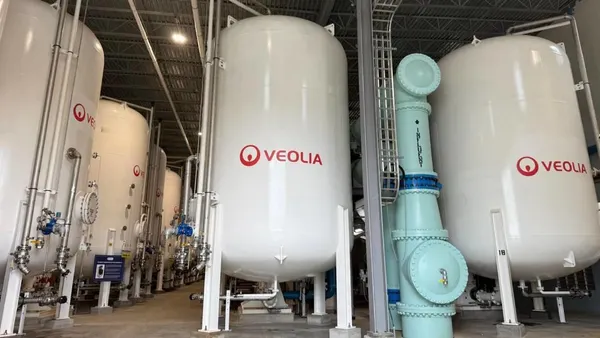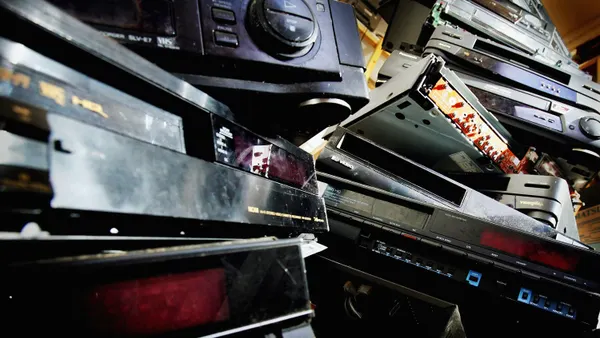Dive Brief:
- Although only a handful of states have implemented rules related to the disposal of batteries, photovoltaic (PV) panels and other renewable assets, the time has come to consider their fate as early installations reach the end of their useful life, industry leaders concluded during a Tuesday webinar hosted by the Electric Power Research Institute (EPRI).
- Batteries, solar panels and even wind turbines contain components that could be repurposed and recycled, panelists said, but high costs and the limited availability of these materials present barriers to scaling up recycling operations.
- To create a "circular economy" in which no raw materials are wasted would reduce the lifetime environmental impact of renewable energy, but accomplishing this requires intent and funding that "starts at the design phase," said Peter Perrault, senior manager of circular economy and sustainable solutions at Enel North America.
Dive Insight:
When Neil Wilmshurst, the newly installed senior vice president of energy system resources at EPRI, thinks of the circular economy, he thinks of his wife's iPhone.
"AT&T, Apple, all the providers, they to a certain extent have shown us how this works," Wilmhurst said. "We have this technology that needs to be upgraded. We got a credit for my wife's iPhone, and AT&T got a customer for three years."
His wife's old phone, Wilmhurst said, might be refurbished and resold to a second-hand buyer. Or it could be scrapped and sold for parts. That, he said, captures ideas such as "end-of-first-life" and "circular economy" that he hopes to see embraced in the renewable energy industry.
But there are some barriers to making this a reality, particularly for regulated utilities with an obligation to keep costs low, according to Jeff West, senior director of environmental services for Xcel Energy. Recycling, he said, is rarely the economic option, making it a hard sell to regulators.
On the other hand, said Chris Howell, senior director of recycling operations at Veolia, when they put the concept to the test in partnership with GE, they found it was entirely possible to recycle over a thousand wind turbine blades from a repowering project. The blades, he said, were shredded and used for fuel and raw materials in cement kilns — a use that also helped the kilns realize a significant reduction of carbon dioxide emissions. The main obstacle wasn't cost, he said, it was volume.
"It takes significant investment to perform this service," he said. "So we had to 'chicken and egg' at the same time — source materials and determine offtakes, in a cost effective manner ... because it does cost more than going to the landfill."
Renewable recycling, Xcel's West agreed, is "in its infantile state."
It's not just that there's limited volumes of material from wind turbines, solar panels and batteries available to recycle, said Matt Henigan, deputy director of materials management and local assistance at CalRecycle — it's also necessary to establish an entire recycling ecosystem where none has existed before.
CalRecycle has some thoughts on how that could be done, Henigan said, based on their other recycling programs. He said he was particularly keen on establishing fees that could be applied at the point of purchase and used to fund downstream recycling programs.
"We have maybe externalized some of these costs in our drive to make renewables competitive with fossil fuels," he said, "and now we need to reckon with that."










